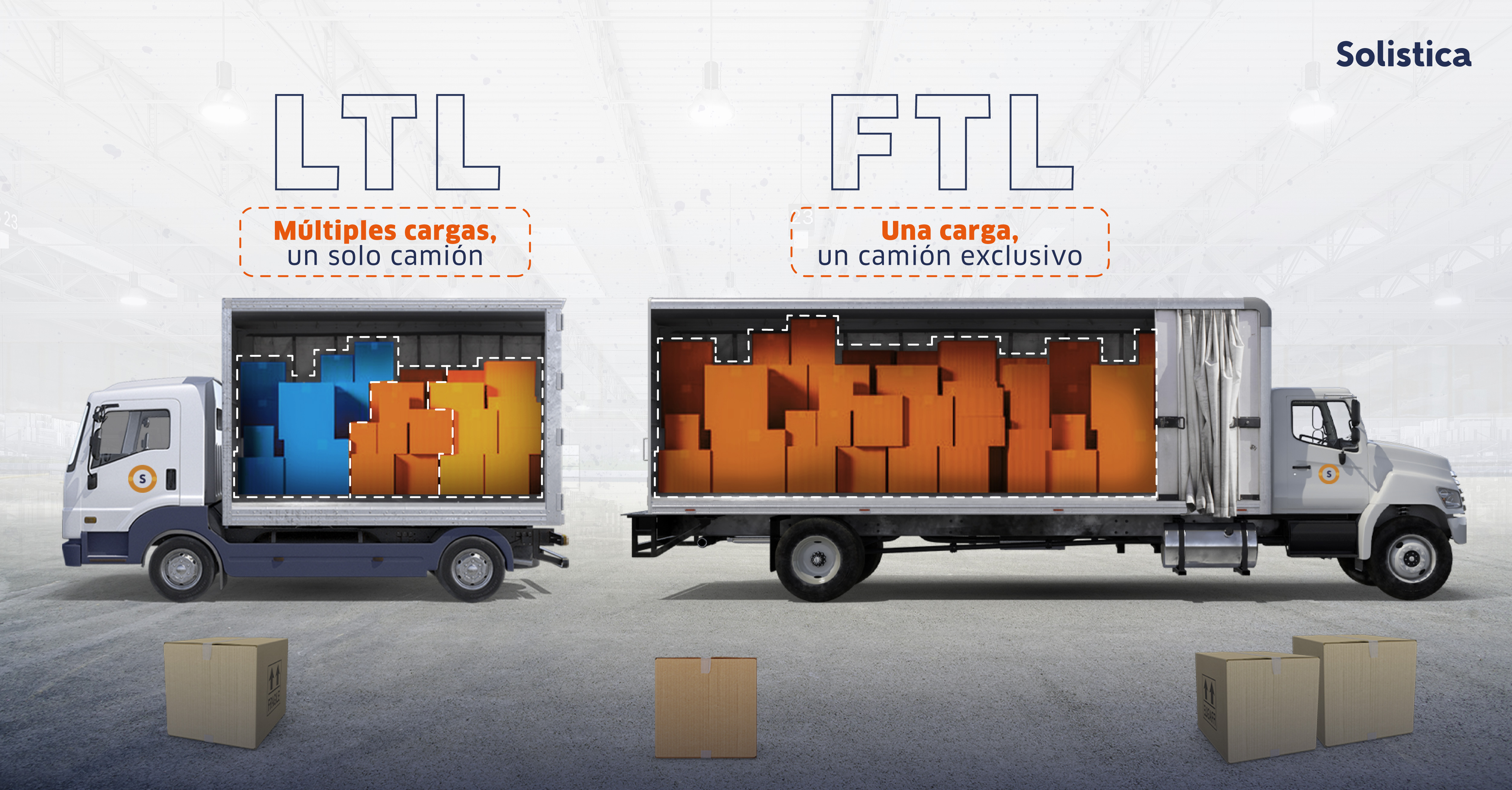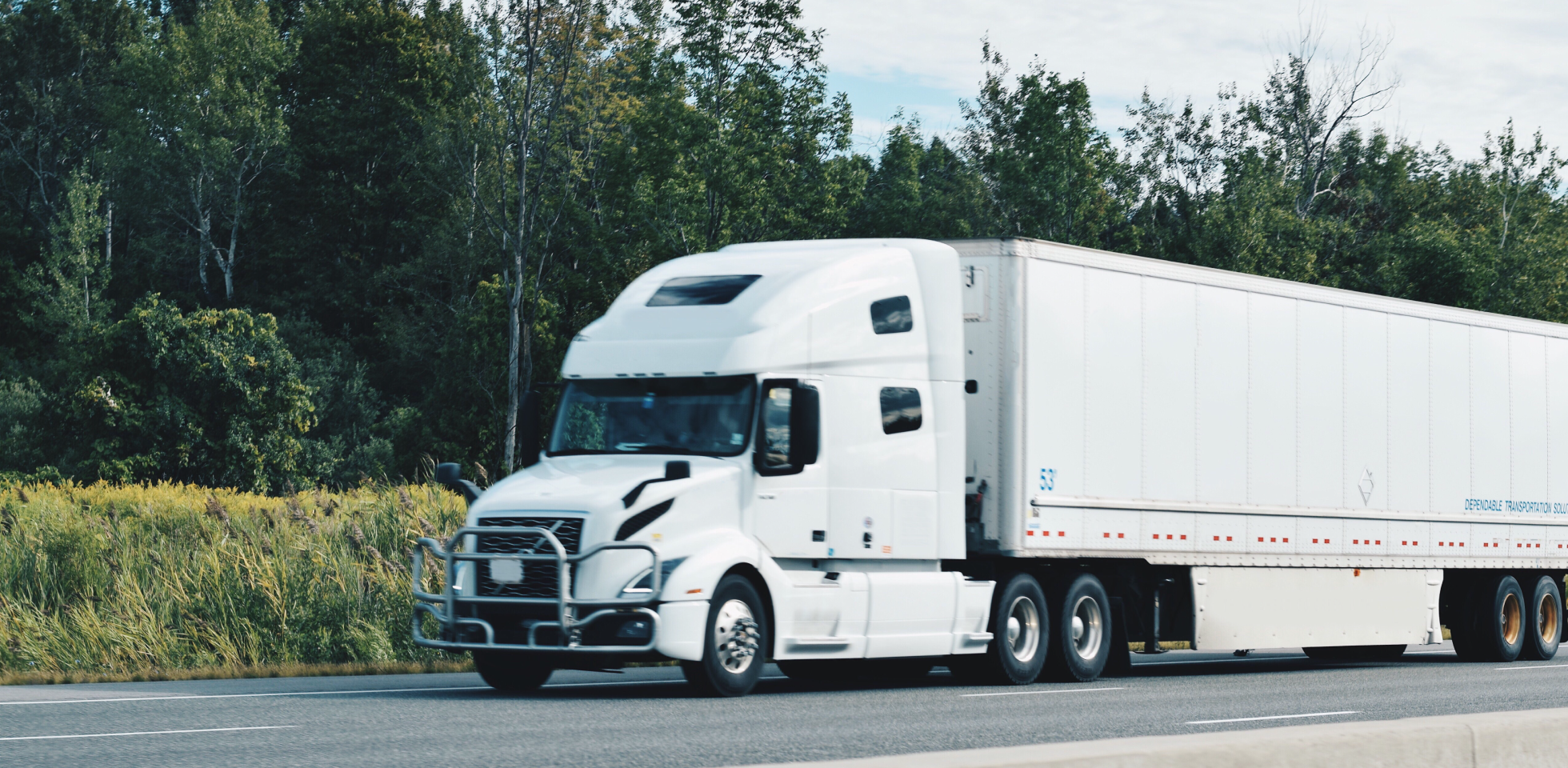Within the context of business logistics, operational efficiency and cost management are fundamental pillars to maintain competitiveness in the market. In this environment, land transport strategies play a crucial role, directly impacting the profitability and success of companies.
Focus on FTL and LTL Modalities
This analysis focuses on two essential modalities of land transport: Full Truck Load (FTL) and Less than Truck Load (LTL). We will discuss in detail their distinctive characteristics, specific advantages, and the ideal time for their application, providing a comprehensive guide for companies looking to optimize their logistics operations.
FTL: Maximized Efficiency in Full Loads
The FTL modality is configured as the ideal option for the transport of large volumes of goods. By occupying the entire available space in the truck, it offers a series of benefits that make it an attractive solution for companies with specific needs:
- Risk Minimization: By transporting a single load, handling during loading and unloading is significantly reduced, decreasing the chances of damage during the journey. This feature is especially relevant for fragile or sensitive products that require careful handling.
- Speed in Delivery: By avoiding transshipments and intermediate stops, FTL shipments are characterized by faster and more direct delivery times compared to other modalities. This advantage is crucial for companies facing tight deadlines or operating in sectors where speed is a determining factor.
- Total Space Control: FTL stands out for the exclusive control that the sender has over the truck’s space. This ensures that the load does not mix with that of other senders, reducing the risk of delivery errors and guaranteeing the integrity of the products throughout the journey.
- Efficiency for Large Shipments: By adapting to large volumes of cargo, FTL becomes the most efficient and profitable option for companies that need to transport a considerable amount of goods from a single origin to a single destination. This modality allows for a more efficient distribution of operating costs and greater overall productivity.
- Customized Rates: FTL rates are calculated based on various factors, such as the total space of the truck, the distance to be traveled, and other operating costs such as fuel and driver’s salary. This pricing structure reflects the personalized and exclusive nature of the service.
LTL: Flexible Solutions for Partial Loads
The LTL modality stands out for its ability to combine shipments from different companies in a single vehicle, sharing space and transportation costs. While it may seem less conventional than FTL, LTL offers a series of advantages that make it an attractive option for companies with specific needs:
- Efficiency in Small Loads: LTL stands out for its ability to transport smaller volume loads that do not fill a complete truck. This characteristic makes it an attractive option for companies that make frequent shipments, but do not require a full load capacity on each trip, allowing them to optimize resources and reduce costs.
- Expansion to New Markets: By facilitating the transportation of smaller loads, LTL opens the door to expansion into new markets for companies looking to diversify their operations. This flexibility can generate strategic opportunities to reach new customers and expand the business base.
- Reduction of Supply Times: The possibility of accessing supplies more frequently thanks to LTL can accelerate the supply and production processes for companies that depend on an efficient supply chain. By having access to products more regularly, companies can minimize the risk of shortage and optimize their operations in general.
- Environmental Sustainability: By sharing space in the truck and combining shipments from different senders, LTL contributes to the reduction of environmental impact compared to individualized transportation. This environmental consideration is increasingly important for companies looking to improve their corporate social responsibility and reduce their carbon footprint.
- Competitive Rates: LTL rates are determined based on various aspects, such as the distance traveled, the volume and weight of the load, as well as additional services such as indoor collection and arrival notification. This pricing structure reflects the shared and collaborative nature of this transportation method.
Key Differences and Optimal Time of Use
Understanding the differences between FTL and LTL is fundamental to making informed decisions about choosing the most suitable transportation method in each specific situation. Below is a detailed description of the circumstances in which each modality stands out:
Optimal Time of Use: FTL vs. LTL
FTL:
FTL is recommended when you need to transport a load that completely occupies a truck.
- In urgent shipments that require fast and precise delivery times.
- For fragile or sensitive products that require careful handling and less manipulation during transport.
- When seeking to have absolute control over the space of the truck and wishing to avoid mixing loads with other senders.
LTL:
On the other hand, LTL is more suitable in situations where you need to transport smaller loads that do not fill a complete truck.
- In recurring shipments that do not require a full load capacity on each trip.
- For companies looking to reduce costs by sharing space and transportation costs with other senders.
- When flexibility in delivery times is a priority and wider delivery times can be tolerated.
Choosing the Right Strategy
Both FTL and LTL offer valuable logistic strategies for the land transportation of goods, each with its own advantages and distinctive characteristics.
- FTL: Ideal for large volumes, urgent deliveries, sensitive products, and total control of space.
- LTL: Flexible solution for small loads, recurring shipments, cost reduction, and greater flexibility in delivery times.
By understanding the differences between FTL and LTL, companies can make informed decisions about choosing the most suitable transportation method in each specific situation. The choice will depend on factors such as the size of the load, the urgency of delivery, the fragility of the products, and the need for space control.
Taking advantage of the benefits of each modality allows optimizing operational efficiency, reducing costs, and improving competitiveness in the market.
Considerations:
- Technology and Tracking: Regardless of the chosen modality, it is important to have technological platforms that allow real-time tracking of the load, as well as efficient management of shipments and communication with carriers.
- Strategic Planning: The selection of the transportation modality should be part of a comprehensive logistics planning that considers the specific needs of the company, business objectives, and distribution strategy.
- Strategic Partners: The choice of reliable and experienced transportation providers in the chosen modality is fundamental to ensure the safety, efficiency, and punctuality of shipments.
Business logistics benefit from transportation strategies such as FTL and LTL, which allow optimizing efficiency and reducing costs in the land transportation of goods. The choice between these modalities will depend on the specific needs of each company and the requirements of each shipment. By leveraging the advantages of each modality, companies can improve their competitiveness in the market and achieve efficient and profitable logistics.






